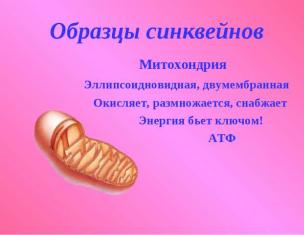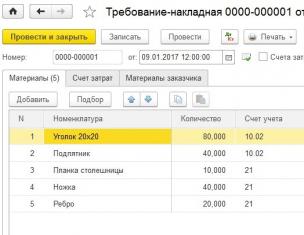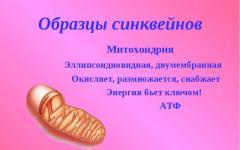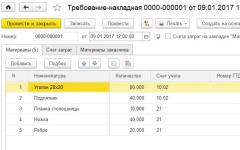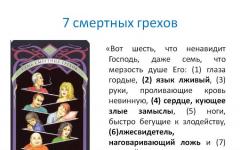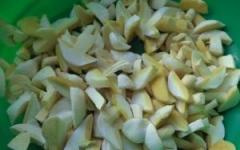Recently, it has become popular to use a method called “syncwine” in school classes. It is believed that this stimulates the mental activity of students, promotes the development of creative thinking, writing and reading skills, the ability to analyze and draw conclusions, briefly formulating them. In addition, making syncwines is very interesting and children enjoy doing it.
What is syncwine?
This form of versification appeared at the instigation of the American Adelaide Crapsey at the beginning of the last century, thanks to the eastern principles of poetry - haiku and tanka. The result was a cinquain - a laconic five-line poetic form that carries synthesized information. Sinkwine is divided into several varieties, each of which has certain composition rules.
Crapsey came up with the traditional form of composing a pentaline, where the work included 22 syllables and had a structure like this: 2 - 4 - 6 - 8 - 2, where the number indicates the number of syllables in each line.
The didactic form of syncwine began to be used to teach American schoolchildren. It differs from other five-line verses in that it is not the observance of the syllable structure that is important, but the semantic information of the lines.
The classic traditional syncwine is composed as follows:
- The first line is the topic, noun or pronoun;
- The second line is two adjectives or participles, they briefly characterize the topic, describing it;
- The third line is three words of verbs or gerunds that reveal the action;
- The fourth line is the author’s opinion about the topic being described in four words;
- The fifth line is the final line, the essence of the topic, consisting of one word and any part of speech.
Of course, these are the general basics of writing a syncwine that you should try to adhere to. But small adjustments can be made if the meaning of the poem benefits from this. To prevent a five-line text from turning out to be a jumbled collection of words, it is allowed to increase the words in a line or replace parts of speech, and so on. The main thing is that as a result the author creates an interesting creation with important information.
Pedagogical value of syncwine
This poetic form began to be used in Russian schools not so long ago, in the last decade of the last century. But it has been successfully used in Western school curricula for almost 100 years.
From a pedagogical point of view, syncwine is an excellent way for a student to realize his creative potential. This poetic form helps to find and highlight the most important points in the information field, compose them and briefly bring them to the attention of others.
Sinkwine helps overcome speech monotony in a child, helps enrich vocabulary, and accelerate mental development. Compiling pentaverses helps develop analytical thinking skills. It is convenient to use it as a final task to check the material covered. The simplicity of constructing a poem makes this development method very effective for children of different ages.
To take syncwine, you need to have knowledge and understanding of the material covered. This form can be used not only in literature or the Russian language, but also in subjects such as physics, chemistry, biology, you can check the student’s level of knowledge by compiling a syncwine. Moreover, although it takes less time than writing a standard test, it will require no less intensity of mental work. And the result will be much more original, interesting and revealing.
Let's try to understand step by step how to write a non-rhyming poem using the word “book”.
1 line
Line 1 is the topic, which means the word “book” is the finished starting line of our poem. But books are different, what characteristics should we give them? To do this, you need to specify the topic (in this case, the book). Let's move on to the second line.
2 line
Line 2 gives a description of the subject (topic). What do you think of when you hear the word “book”? Everyone has their own associations, for example:
- Electronic, paper;
- Interesting, fascinating, with pictures and illustrations;
- Boring, technical, with formulas and diagrams;
- Old, ancient, with notes in the margins.
The list can be very long and there is no definitely correct definition, since everyone has their own first perception when pronouncing a word. Some people imagine their favorite children’s book, others a hefty tome in their father’s office, others an abstract image in the form of store shelves with many creations. You need to write what you think is related to “your” book. For example:
- bright, colorful;
- boring, instructive;
- historical, interesting.
From the second line the character of our book is already clearly presented.
3 line
Line 3 should describe the action. What actions generally happen with the book? It is composed, written, published, sold, on the shelf, and so on. But it would be more correct to describe the actions in relation to the author: captivates, puts you to sleep, makes you bored, teaches, tells, makes you worry. The choice of characterizing verbs depends on the description given. Let’s say that the boring, moralizing line in the second line cannot captivate or awaken the imagination in the third.
When writing the third line, the main rule is to stick to the image that has already been created. You also need to monitor the use of cognate words; if the book was described as interesting, then you should not characterize the action that interests it. The result will be a transfusion of “water”. It is better to use a word with a similar meaning: an interesting book captivates.
4 line
Line 4 of the pentaverse implies an expression of personal attitude towards the topic (book). As a rule, this line is the most difficult to formulate. Schoolchildren are constantly taught that thoughts must be expressed directly and unambiguously: I love to read, I find books useful and moralizing. In practice, syncwine does not require an assessment and implies a free interpretation. You need to determine what is most important in relation to you and your life related to books.
For example:
- I hate sitting with a book;
- learned to read at age five;
- I have a lot of books at home.
If the imagination pictures deforestation to produce paper for books, then there may be the following formulations:
- published a book - destroyed a tree;
- books made of paper - a planet without trees.
That is, an expression of personal attitude towards books in a clear and understandable form. If it is difficult to immediately compose a short, succinct phrase, then you can write your thought in free form, not counting the number of words, and then decide how to reduce it to the required size. For example: “I love reading historical novels and can sit over a book all night until the morning.” As a result, the shortened version will look like:
- I read all night long;
- I’ll read the whole book before morning;
- a book in your hands - a dream is at your doorstep.
5 line
Line 5 is the final line, its task is to summarize the entire work in one word. First you need to write the resulting four lines and read them. This is an almost finished unrhymed poem. Let’s say you remember children’s works:
- Bright, fabulous.
- Entertains, fascinates, lulls.
- Mom read it before bed.
To formulate the main idea of the syncwine, you need to draw a conclusion from the resulting work: “I remember how, as a child, I liked it when my mother read bedtime stories.” Most likely, the final word will already be contained in the final phrase. In this case, the word “childhood” would be appropriate.
Examples of syncwines
Writing syncwines is a creative and exciting process. Children love such activities and often suggest topics for poems themselves. Here are some examples of creating simple unrhymed five-line verses for younger students.
Summer
Warm, sunny.
Swim, relax, walk.
The best time of the year.
Holidays.
War
Cruel, scary.
Kills, tortures, shoots.
I've seen films about the war.
School
Big, noisy.
Teaches, helps, guides.
I like going to classes.
Grandmother
Caring, affectionate.
He takes pity, nurses, looks after.
Grandma has the most delicious pies.
Cherry
Fragrant, sweet.
It blooms, smells, ripens.
I love cherry jam.
Firework
Brilliant, colorful.
It shoots, sparkles, roars.
It is a symbol of joy and victory.
Child
Small, defenseless.
Laughs, rejoices, grows.
Children are the flowers of life.
Police
Brave, brave.
Catches, protects, guards.
My city is the safest.
September 1
Festive, elegant.
Let's go, study, get acquainted.
For the first time in first class!
Citizen
Active. Conscious.
Builds, performs, monitors.
Together - we are force.
If you need to compose a syncwine on any topic, but are having difficulty with it, we can help you. Write the topic of syncwine in the comments to the article, and we will try to compile it for you.
SYNCWAINS IN BIOLOGY LESSONS.
Alferova E.V., biology teacher
MBOU "Secondary School No. 70" Khabarovsk
Sinkwine is one of the effective methods of child development, which allows you to quickly get results through a non-rhyming poem,
Cinquain (from fr. cinquains, English cinquain) - five-line poetic form that arose in USA at first XX century influenced Japanese poetry. Later it began to be used (lately, since 1997, and in Russia) for didactic purposes, as an effective method of developing figurative speech, which allows you to quickly get results. A number of methodologists believe that syncwines are useful as a tool for synthesizing complex information, as a snapshot for assessing students’ conceptual and vocabulary knowledge.
Didactic syncwine developed in the practice of the American school. In that genre the text is based not on syllabic dependence, but on the content and syntactic specificity of each line.
Writing a syncwine is a form of free creativity that requires the author to be able to find the most significant elements in information material, draw conclusions and formulate them briefly.
Compiling a syncwine, a short summary based on large amounts of information, is useful for developing the ability to analyze. Unlike a school essay, a syncwine requires less time, although it has more rigid boundaries in the form of presentation, and its writing requires the compiler to realize almost all of his personal abilities (intellectual, creative, imaginative). Thus, the procedure for compiling a syncwine allows you to harmoniously combine elements of all three main educational systems: informational, activity-based and personality-oriented.
Rules for compiling syncwine:
Line 1 – one word, usually a noun, reflecting the main idea;
Line 2 – two words, adjectives describing the main idea;
Line 3 – three words, verbs describing actions within the topic;
Line 4 - a phrase of several words expressing an attitude towards the topic;
Line 5 – one word (association, synonym for the topic, usually a noun, descriptive language is allowed, emotional attitude to the topic).
By composing a syncwine, everyone realizes their talents and abilities: intellectual, creative, imaginative. If the task is completed correctly, the cinquain will definitely turn out to be emotional.
Here are some examples of fairly successful syncwines:
Cytology
studying, cellular
examines, establishes, diagnoses
a branch of biology that studies living cells, their organelles, their structure, functioning, processes of cell reproduction, aging and death
cell biology
Anatomy
ancient, scientific
examines, examines, examines
the science of the form and structure of individual organs, systems and the body as a whole
group of scientific branches
Life
living, flowing
multiply, develop, exist
way of being of entities
fatal hereditary disease sexually transmitted
Morphology
scientific, complex
studies, researches
form and structure of animal and plant organisms
complex of scientific branches
Organism
alive, active
consists, possesses, differs
body with organs
individual
Flower
modified, shortened
attracts pollinated develops
organ of seed reproduction of flowering plants
sporiferous shoot
Cytoplasm
watery, changing
moves, grows, reproduces
internal environment of a living or dead cell
content
Mutation
Random, persistent.
Changes, manifests, inherits.
There would be no happiness, but misfortune would help!
Evolution.
Stem cell
Unspecialized, flexible
Divides, differentiates, migrates
A stem cell is the doctor inside you
Proteasome
Barrel-shaped, selective
Recognizes, splits, regulates
Regeneration
A damaged protein is not a cell mate!
Terminator
Microtubule
Growing, hollow
Move, lean, transport
Without microtubules the cell pipe!
Squirrels
Three-dimensional, unique
Accelerate, regulate, protect
You can’t live in the world without proteins, no!
Core
Large, double membrane
Regulates, controls, transmits
A cell without a nucleus is neither here nor there!
Mitosis
Four-stage, the most common,
Provides, reproduces, supports,
Mitosis is the basis of growth and vegetative reproduction,
Division.
How to work with syncwines.
We offer the following ways for students to work with syncwines:
Compiling a new syncwine (individually, in pairs, in groups).
Compiling a short story based on a ready-made syncwine using words and phrases that are part of the syncwine.
Example. Compiling a short story based on syncwine.
Modification
Adaptive, reversible
Vary, adapt, shape
Without it, like without water, we cannot exist!
Evolution
Modifications are specific values of a variable characteristic of an organism that are formed under specific environmental conditions. They are adaptive in nature - they ensure the fitness of organisms in the environment. The modifications are reversible: they disappear after the action of the factor that caused their formation ceases. Modifications vary (change within certain limits) with typical environmental changes. By forming modifications, the body adapts to specific environmental conditions. The formation of modifications occurs at the stages of gene expression that determine the development of the trait. Modifications are the result of the evolution of a species.
Correction and improvement of the finished syncwine.
Example. Syncwine correction
Cell
Eukaryotic, prokaryotic
Divides, multiplies, renews
A cell is an elementary particle of living matter
Modified syncwine.
Analysis of an incomplete syncwine without specifying the theme of the syncwine and determining the name of the theme of this syncwine.
Example. Determining the theme of a syncwine (guess the word of the first line)
Sinkwine 1.
Strong, varied
Fight, compete, get ahead
Fight and search, find – and don’t give up!
Selection
Sinkwine 2.
Autotrophic, green
Begin, synthesize, transmit
CO2 and water are our food!
food chain
Sinkwine 3.
Live, cubic
Share, eat, breathe
You can't build a house without bricks.
Textile
Sinkwine 4.
Complex, resilient
Eat, live, reproduce
My home is my castle.
Ecosystem
Sinkwine 5.
?
Viral, chimeric,
Encode, synthesize, condition
One is good, but two are more reliable!
Chromosome
Sinkwine 6.
?
Multifactorial, chromosomal
violate, change, condition
Misfortune never comes alone.
Disease
Sinkwine 7.
Resistant, infectious
To strike, to change, to destroy
This is the mystery of the century - the death of the human world!
Protein
Sinkwine 8.
Helpful, neutral
Form, transmit, change
He catches everyone's eye!
Phenotype
Sinkwine 9.
Fixed, spherical
Store, merge, sell
She does good - it is encrypted.
Organism
Sinkwine 10.
Smooth, rough
Synthesize, transport, store
The protein path from the ribosome to the Golgi apparatus lies through it
Vacuolar system
Cinquains are an excellent way to control. It is impossible to write a poem correctly without reading the text.
If suddenly you have difficulty finding words that are appropriate in syncwine, then the problem is most likely explained by the following. Either the topic of syncwine is not close to you (it is not understood by you or is simply not interesting). Or you need to work on expanding your vocabulary.
Synquains are also very convenient to use for self-control or for mnemonic purposes. If you can easily compose a poem, then rest assured that the topic has been mastered well. In addition, syncwine contains the quintessence of the material - your emotional perception of it. Therefore, you can later repeat this topic by simply remembering your syncwine.
Using crossense and syncwine technologies in biology lessons.
Biology teacher, MBOU Secondary School No. 8, village. Levokumka
Mineralovodsk district, Stavropol region
Myasishcheva Natalya Alekseevna
Active learning methods – methods that stimulate the cognitive activity of students, they are based mainly on dialogue, involving a free exchange of opinions on ways to resolve a particular problem, and are characterized by a high level of student activity. Research shows that it is in active classes—if they are goal-oriented and well-organized—that students often learn the material most fully and profitably. Active learning methods, when skillfully applied, allow simultaneous solution of three educational and organizational tasks:
1) subordinate the learning process to the control influence of the teacher;
2) ensure the active participation in educational work of both prepared and unprepared students;
3) establish continuous control over the process of mastering educational material.
Active learning methods (according to A.M. Smolkin) are ways to intensify the educational and cognitive activity of students, which encourage them to active mental and practical activity in the process of mastering the material, when not only the teacher is active, but the students are also active.
Active teaching methods involve the use of a system of methods that is aimed primarily not at the teacher’s presentation of ready-made knowledge and its reproduction, but at students’ independent acquisition of knowledge in the process of active cognitive activity.
Sinkwineis a creative work that has the short form of a poem consisting of five unrhymed lines.Sinkwine - five-line form that arose in at the beginning under the influence . Later it began to be used (lately, since 1997, and in ) for didactic purposes, as an effective method of developing figurative speech, which allows you to quickly get results
Sinkwine- this is not a simple poem, but a poem written according to the following rules: 1 line - one noun expressing the main theme of the syncwine.
Line 2 – two adjectives expressing the main idea.
Line 3 – three verbs describing actions within the topic.
Line 4 is a phrase that carries a certain meaning.
Line 5 – conclusion in the form of a noun (association with the first word).
Making cinquain is very simple and interesting. And besides, working on creating a syncwine develops imaginative thinking.
Writing a syncwine is a form of free creativity that requires the author to be able to find the most essential elements in the information material and makeconclusions and formulate them briefly.


By composing a syncwine, everyone realizes their talents and abilities: intellectual, creative, imaginative. If the task is completed correctly, the cinquain will definitely turn out to be emotional.
Mutation Random, persistent.Changes, manifests, inherits.There would be no happiness, but misfortune would help!Evolution.
How to work with syncwines.
I suggest the following ways for students to work with syncwines:
Compiling a new syncwine (individually, in pairs, in groups).
2. Compiling a short story based on the finished syncwine using words and phrases included in the syncwine.
Example. Compiling a short story based on syncwine.
Modification
Adaptive, reversible
Vary, adapt, shape
Without it, like without water, we cannot exist!
Evolution
Story.
Modifications – these are specific values of a variable characteristic of an organism that are formed under specific environmental conditions. They are wearingadaptive character – ensure the adaptability of organisms in the environment. Modificationsreversible : they disappear after the cessation of the action of the factor that caused their formation. Modificationsvary (change within certain limits) with typical environmental changes. Forming modifications, the organismadapts to specific environmental conditions.Formation modifications occur at the stages of gene expression that determine the development of the trait. Modifications are the resultevolution kind.
3. Correction and improvement of the finished syncwine.
Example. Syncwine correction
Cell
Divides, multiplies, renews
A cell is an elementary particle of living matter
Life
Modified syncwine.
Cell
Eukaryotic, prokaryotic
Share, specialize, renew
Elementary particle of life
Hook
4. Analysis of an incomplete syncwine without indicating the theme of the syncwine and determining the name of the theme of this syncwine.
Example . Determining the theme of a syncwine (guess the word of the first line)
Strong, varied
Fight, compete, get ahead
Fight and search, find – and don’t give up!
Selection
Smooth, rough
Synthesize, transport, store
The protein path from the ribosome to the Golgi apparatus lies through it
Vacuolar system

the ability to find the most important elements in the educational material, draw conclusions and express all this in brief conclusions. This means that the author of the syncwine must have deep knowledge. Compiling a syncwine requires the student to have a topic, have his own opinion on it and express it according to certain rules.Cinquains are an excellent way to control. It is impossible to write a poem correctly without reading the text.

No one will argue that every teacher should develop the logical thinking of students. This is a requirement of the Federal State Educational Standard, it is stated in the methodological literature. However, the teacher does not always know how to do this. Mathematics plays a huge role in the development of logical thinking, but the question arises - Doesn’t our subject develop logical thinking?
I also believe that logical thinking can be developed in any lesson. Today I would like to tell and show my experience in developing logical thinking in biology lessons using the “Crossence” technique
What is "Crossens"?
The word "crossence" was coined by the authors by analogy with the word "crossword", which in English means "intersection of meanings". This technique was developed by Sergei Fedin - writer, teacher, mathematician and Vladimir Buslenko - Doctor of Technical Sciences, artist and philosopher. Crossens was first published in 2002 in the journal Science and Life.
The idea of crossence, like everything simple, is ingenious, and like everything ingenious, it is very simple. Unlike a crossword puzzle, where all the cells are empty, in a crossword they are already filled with pictures. There are nine pictures in total, and twelve tasks (according to the number of adjacent pairs). You can read crossense in one of the following ways:
− from top to bottom and from left to right (as a rule of reading in Russian), then move only forward and end on the central 5th square, this way you get a chain wrapped in a “snail”;
− You can start either with the first one or with any recognizable picture. The central square is the square with number 5. At the request of the author, it can be connected in meaning with all the images in the crossense
− usually you need to establish connections along the perimeter between squares 1–2, 2–3, 3–6, 6–9, 9–8, 8–7, 7–4, 4–1, as well as along the central cross between squares 2– 5, 6–5, 8–5 and 4–5 (Fig. 3).
Crossens are used at different stages of the lesson:
− when checking homework;
− when formulating the topic of the lesson, setting the goal of the lesson;
− when opening the information block of a topic,when summarizing material, consolidating;
− when organizing group work;
− creative homework.
The algorithm for compiling crossence is quite simple and understandable: 1) determination of the topic, general idea;
2) search and selection of images illustrating elements;
3) highlighting 9 elements - images related to the idea, topic;
4 connection between elements, determination of sequence;
5) concentration of meaning in one element (5th square);
6) highlighting the distinctive features and characteristics of each element.
Here is a crossword that I use in biology lessons in class to formulate the lesson topic “Root”, “Types of roots. Root functions"
I show the students crossens on the screen. I ask:
What word combines these pictures? Justify your answer.
How would you formulate the topic of the lesson?
Thus, crossness is a methodological technique that makes it possible to practically implement in the teacher’s activities a change in priorities dictated by the goals of the modern education system - not to teach, but to create conditions for the student’s independent creative search; reception‐ new generation puzzle.
Becoming a creator who knows how to create his own unique imaginative worlds filled with meaning is a brilliant victory for the student and the teacher. Isn't this the main purpose of EDUCATION?
I wish you all health and great victories in your creative field!
Parents and teachers are concerned that children have stopped loving reading. But it is important not only to cultivate an interest in books, but also to teach them to analyze what they read. That is why in literature lessons, techniques aimed at developing critical thinking - for example, composing a syncwine - become especially relevant.
The essence of the methodological technique
Cinquain (senkan) is translated from French as “a poem of five lines.” Originally, the short rhyming work was a kind of American “answer” to Japanese haiku and tanka, invented in the 20th century by the poet Adelaide Crapsey. Sengkan was built according to a certain syllabic pattern: 2 in the first line, 4 in the second, 6 in the third, 8 in the fourth and 2 in the fifth. There were 22 syllables in total. In pedagogy, the structure of syncwine has become not syllabic, but semantic. It reflects the result of synthesis and analysis of this or that information, that is, each line meets certain requirements of the topic:
- 1st - word-concept (noun or pronoun in initial form);
- 2nd - two words describing qualities (adjectives or participles in the nominative case);
- 3rd - three words telling about actions associated with the concept (verbs or gerunds in the initial form);
- 4th - a sentence (4–5 words) reflecting the attitude towards the concept;
- 5th - a summary word that expresses the essence of the topic.
Sinkwine is an effective reflection tool that allows children to develop the following:
- the ability to briefly express the essence of a particular issue;
- systems thinking;
- analytic skills;
- respect for the word.
In addition, composing five-line unrhymed poems expands students' vocabulary and implements the principle of a creative approach to learning.
Why write a syncwine in a literature lesson?
Sinkwine can be used both when compiling notes for a literature lesson and at the stage of testing knowledge acquisition
Sinkwine is part of the technology of critical thinking, which is based on three stages of organizing the learning process:
- challenge (updating past experience, for example, checking homework);
- comprehension (contact with new information);
- reflection (consolidation of acquired knowledge).
Shinkan can be used at any of these stages. When used in a literature lesson, this method of organizing information helps:
- study the images of heroes (analyze the positive and negative aspects of the character, the motives of his actions);
- understand certain concepts (syncwine helps not only to interpret the term, but also to provide a specific example);
- understand the point of view of the author of the work and his contemporaries (what is duty, honor, morality, and so on).
Using a five-line poem composed by a child, a teacher can easily draw conclusions about the quality of learning the material, the depth of understanding of the problem, the degree of development of imaginative thinking and the gaps in knowledge that the student has.
Rules to help you make syncwine (with diagram, plan and example)
The syncwine scheme is simple and understandable to students of any level
An exciting and creative activity - composing a syncwine - teaches children to organize their thoughts. In order for the technique to meet the teacher’s expectations, it is necessary to clearly explain to students how senkan is done:
- From a problem or a new body of information, one main word stands out.
- The most appropriate definitions for the phenomenon are selected. These can be both real-life signs and associative ones (for example, Pushkin’s Onegin is dapper, that is, this characteristic is objective; curly-haired - by analogy with the author, who is often called the prototype of the character - an associative sign);
- Then there are action words that describe the concept. It is desirable that these verbs are actually present in the text when working with a literary work.
- To describe the concept, you need to come up with a short phrase. For elementary and middle school students, it can be a proverb or saying, but older students can write their own statement.
- The compilation of the syncwine is completed by selecting a word that denotes a concept synonymous with the original one.
For example, the simplest senkan could be like this:
- BOOK
- Interesting, new
- Enrich, teach, distract
- Reading is the path to the world of images.
- Pleasure
Tips on how to compose senkan in a literature lesson (with examples)
With the help of syncwine it is very convenient to characterize a character’s image
Sinkwine can be used in lessons in any class. The teacher's task is to make the work feasible for children of different ages. Methodological recommendations for composing an unrhymed five-line poem can be divided into advice for elementary, middle and senior levels.
1–4 grades
In a primary school lesson, when compiling a senkan, you need to do the following:
- Together with the students, highlight the general concept - the first line;
- for the second and third lines, choose the first word collectively;
- give examples for the fourth line;
- in case of difficulties, help with the selection of a synonym or allow you to express the essence of the phenomenon not in one word, but in a phrase of two.
5–9 grades
At the middle level, it makes sense to give an alternative for the first word, since the psychological characteristics of children at this age determine the negative attitude of adolescents towards the lack of choice and can cause children to refuse to complete a task because of its “difficulty”. It is better for schoolchildren to work on lines 2 and 3 themselves: choosing words of these categories is not so difficult, it is almost impossible to make mistakes, but making an independent choice will increase the authority of the young poet in his own eyes. Finding the appropriate phrase and synonym for the original concept can be much more difficult. In this case, you need to start from the capabilities of a particular student: perhaps it makes sense to help the child or make this stage of compiling a syncwine a group one.
When compiling a syncwine in a lesson in primary school, the teacher is recommended to help a student experiencing difficulties
10–11 grades
At the senior level, the teacher may limit himself to suggesting the use of senkan to work on a particular literary work. Students can complete all stages of the work without outside help. At the same time, five-line poems can be used to compile a summary, and to analyze the character’s actions, and to evaluate the role of the hero in the system of the entire work.
Samples to help you compose a syncwine
A five-line poem without rhyme in a literature lesson can relate to different aspects of the course: both theoretical and practical. Theory includes familiarity with the conceptual apparatus. For example, kids need to learn what a fairy tale is:
- FAIRY TALE
- Magic, household
- Tell, listen, read
- A fairy tale is a lie, but there is a hint in it
- History (as an option - a magical story).
This is how the essence of other concepts can be expressed: poem, true story, story, and so on.
In the middle level, many lessons are devoted to getting to know the areas of literature. This could be an example of a syncwine based on one of them:
- ROMANTICISM
- Fictional, sentimental, tragic
- Add up, suffer, think
- Romanticism is the flowering of literature.
- Pushkin (this line can contain any name of a romantic writer).
In a similar way, one can imagine the trends of the Silver Age (Acmeism, Futurism), and the genre uniqueness of modern literature (free libre, tragifarce).
Younger schoolchildren can compose a syncwine collectively
As for the study of specific literary works, this is the most fertile ground for using the technique. For example, kids will remember Carlson’s characterization faster if they make up a syncwine during class:
- CARLSON
- Fat, kind, cheerful
- Play naughty, fly, calm down
- A man in his prime.
- Propeller
The study of characters in grades 5–9 is based on comparing the moral principles of different personality types. The task of the subject teacher is to show the children that a person is a tangle of contradictions that does not fit into the framework of only a positive or negative set of qualities.
- PECHORIN
- Young, seeking, extra
- Serve, love, die
- Pechorin is the image of Lermontov.
- Onegin (or Chatsky, representative of the galaxy of images of the “superfluous man”)
For high school students, images of writers are no less interesting:
- BULGAKOV
- Talented, sick, allegorical
- Ironize, be afraid, suffer
- Bulgakov is a genius of his time.
- Master
Sinkwine in a literature lesson is not only a great way to make students think and analyze, but also a technique that allows you to unleash the creative potential of the younger generation. In addition, the methodological features of using senkan in different classes make it possible to place it in first place among the universal methods of presenting material.
Cinquain is a poem that requires the presentation of a large amount of educational information in brief terms, which allows you to describe and reflect on a specific occasion. The word cinquain comes from the French meaning five. Thus, a cinquain is a poem consisting of five lines. Introducing students to syncwines begins with an explanation of how such poems are written.
- 1st line - the name of the syncwine.
- 2nd line - two adjectives.
- 3rd line - three verbs.
- The 4th line is a phrase on the theme of syncwine.
- The 5th line is a noun.
Compiling syncwines is most effective when working in pairs within a group. The theme for syncwine is called. Each participant is given 5-7 minutes. to write a syncwine. Then he turns to his neighbor, and from two syncwines they make one with which they both agree. Then the whole group gets acquainted with paired syncwines.
Sinkwine.
Simple and complex
Absorbs, releases, evaporates.
Carries out the most important process on earth.
Photosynthesis.
Kind, knowledgeable
Teaches, educates, helps
An old friend is better than a new one
The work with syncwines can be improved. You can create artistic designs for syncwines.
Sinkwine is an effective and powerful tool for reflection, synthesis and generalization of concepts and information. It promotes the development of logical thinking in students.



